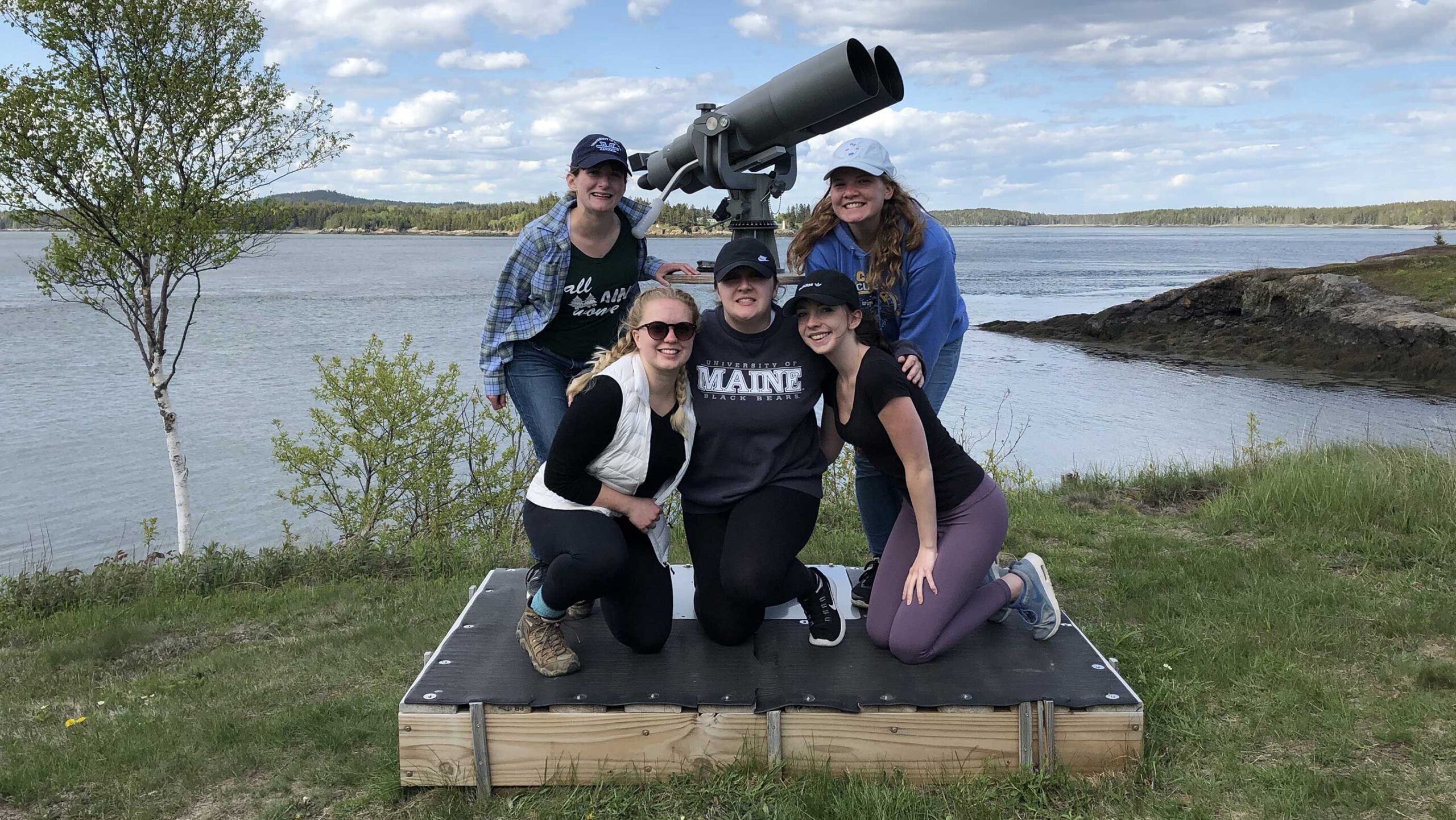
UMaine researchers look at tidal energy in the Western Passage through an interdisciplinary lens
A team of students and researchers, led by Kristina Cammen, participated in the development and implementation of interdisciplinary methodologies in environmental science. Their findings, recently published in Oceanography, outline methods to provide undergraduate students with research experience, using an interdisciplinary framework for training, research and communication.
The team used a case study focused on the development of tidal energy, a marine renewable energy source, in Eastern Maine.
“The issue was a need to better understand a complex ecosystem in the Western Passage, which is located as far East as you can go in Maine, between Eastport and Canada. This is a site that’s gotten a lot of attention for its potential for tidal energy,” Cammen said.
The Western Passage is regarded as one of the top five most promising tidal energy sites in the US. According to the study, the site includes physical, biological, and social features that need to be considered when looking at tidal energy.
“And so we wanted to help develop interdisciplinary methods by which one could establish baselines in that ecosystem and then monitor the system through the deployment of tidal power devices moving forward.”
Students, through the Western Passage Student Research Collaborative (WPSRC), took part in this research, each tackling the issue from a variety of perspectives. The students looked at physical, biological, and social dimensions of the Western Passage. Participating in the project were graduate student Gabriella Marafino, and undergraduates Sarah Burton, Jillian Dow, Emma Dullaert, Madalyn Jorge and Kate Macolini.
Emma Dullaert is currently a senior studying marine sciences at UMaine. As part of the research team, she focused mostly on the human element of the project and studied the community structure of fish in the coastal marine community.
Dullaert attended meetings with Eastport community members to ask them to share their in-depth knowledge on the Western Passage ecosystem and how it has changed over time. The research team acknowledged the deep value of local and traditional ecological knowledge, which could supplement data being collected by the students in the field.
The team worked with Maine Sea Grant extension staff Chris Bartlett to study fish communities at five different locations in the Western Passage. They went out on small boats with recreational fishing equipment to catch fish, in order to document and measure them.
“It was kind of a double-edged sword, where we were collecting data on the fish, but it was also kind of limited because of the gear that we were using. But also that is the way that people in the area fish. So, it was kind of about understanding how the ecosystem is used,” Dullaert said.
Students also studied the marine mammals who find a home in Western Passage and other physical aspects of the system. Researchers collected complementary hydroelectric and hydroacoustic data to be used in the study.
The interdisciplinary approach to this topic allowed for a broad lens to be cast on the coastal ecosystem. From people to animals to physical landscapes, there are a lot of factors to consider when pursuing tidal energy.
“The professional relationships that developed between students, research mentors, and diverse stakeholder groups during this year of study, and the experiential learning gains achieved across all levels provide critical building blocks for further exploration of this system and others,” the study states.
The project involved faculty and research staff across various disciplines at UMaine and the University of Maine at Machias, including Louise McGarry, Jessica Jansujwicz, Christopher Tremblay, Tora Johnson, Lauren Ross, and Gayle Zydlewski.
Contact: research@umaine.edu
Written by Ali Tobey
